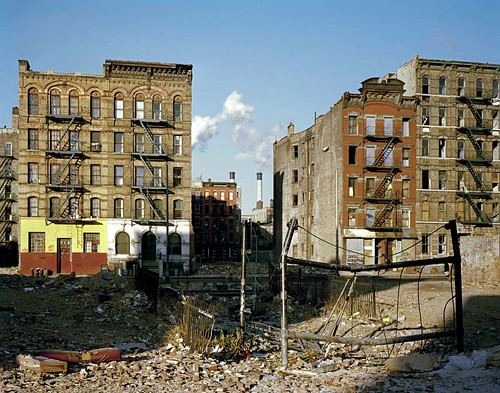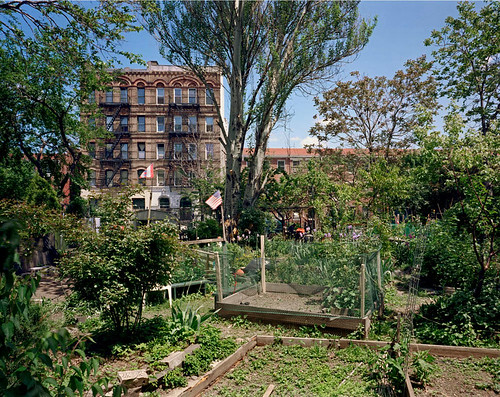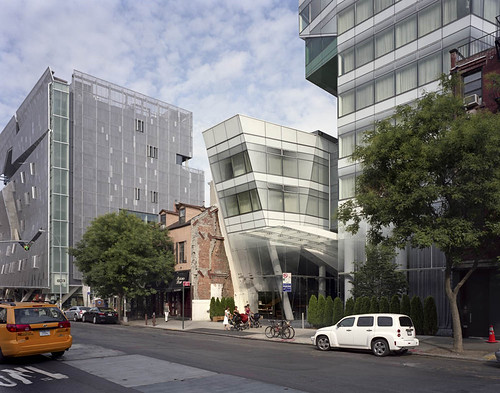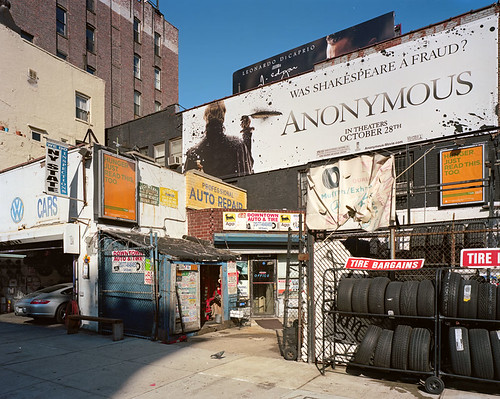Brian Rose’s new book, “Time and Space on the Lower East Side,” juxtaposes street scenes from 1980 with images from 2010. The Local asked him to share some of his favorites from the book – as well as some more recent photos – along with his thoughts about the world of change he has documented.
In 1980, shortly after graduating from Cooper Union I began photographing the Lower East Side, which includes the East Village, in collaboration with Ed Fausty. Walking in the footsteps of photographers Jacob Riis and Berenice Abbot, and inspired by new developments in color photography, we documented the neighborhood over the course of a year with a 4×5 view camera. It was, perhaps, the neighborhood’s darkest, but most creative moment. While buildings crumbled and burned, artists and musicians came to explore and express the edgy quality of the place.
After moving on to other projects and living in Amsterdam for 12 years, I decided to return to where I first made my stand in New York – the Lower East Side, where so many Americans trace their roots: the old neighborhood tucked beneath the bridges, lying at the feet of the pinnacles of power, would serve as a barometer of change and continuity.
From the outset it was clear that this would not be a simple before/after take on the place. While keeping an eye on the earlier photographs done in 1980, I sought to rediscover the neighborhood with fresh eyes, with the perspective of time, change, and history. The result, “Time and Space on the Lower East Side,” is a set of photographs that looks backward and forward, that posits the idea that places are not simply “then and now,” but exist in a continuum of decay and rebirth.
In 1977, when I first arrived in New York I found an apartment on East Fourth Street between the Bowery and Second Avenue. East Fourth was a world unto itself – an intensely political community galvanized by the city’s potentially destructive urban renewal plans, and home of La Mama theater and other innovative arts groups. The above picture means a lot to me personally, but it also epitomizes the basic structure of the Lower East Side, the wall of tenement facades and the distant vanishing point of the street formed by New York’s grid.
When I began re-photographing the neighborhood, it was tempting to duplicate the vantage point of the 1980 pictures. But it was too easy and not always visually satisfying. There were exceptions, however, as seen in the two photographs above. What was once a scene of utter devastation had been transformed into a lush urban garden.
When catastrophe struck on 9/11, I was in Amsterdam, and watched the towers fall on TV. I was back in New York a week later, in my studio on the Lower East Side connecting with friends and considering how I might respond to events as a photographer. Not being a photojournalist, I knew that whatever I did would require a slower, more distanced approach. So, eventually I came to the conclusion that I should re-photograph the Lower East Side as a way of measuring the impact of events on the city.
In 1904 over 1,400 members of the St. Mark’s Evangelical Lutheran Church located on East Sixth Street set out on their annual picnic trip to Long Island. Soon after getting underway on the General Slocum, fire broke out and the steamship became engulfed in flames. Over a thousand perished – burned to death or drowned in the swift current of the river. It was the worst disaster in the city’s history until the terrorist attack on the World Trade Center in 2001.
The Slocum memorial in Tompkins Square Park is astonishingly modest given the scale of the calamity. When Ed and I photographed it in 1980 it was covered in graffiti making its inscription almost unreadable.
People who were around in 1980 get nostalgic for the New York of their youth, when Lower Manhattan was a big playground of creativity, punk rock bursting from storefronts, painters occupying gigantic lofts set off by the city itself in all its apocalyptic semi-abandoned glory. But it must not be forgotten that the fires and abandonment, the poverty and drugs, had real victims. The Lower East Side in 1980 was on the edge of annihilation. Huge housing projects built in the 50s and 60s had replaced the tenements along the East River and now whole sections of the neighborhood were burning down, unscrupulous landlords milking the buildings dry before their final fiery demise.
Although the neighborhood remains densely built, the destruction of the 70s and 80s left numerous gaps in the urban fabric, many now filled by community gardens and playgrounds. In general, New York is a much greener place than it was 30 years ago.
Sometimes it’s hard to believe how far things have come since I first photographed the area. Bleeding-edge architecture now crowds out early 19th century townhouses on the Bowery, and the neighborhood has become, for many, oppressively expensive. But the Lower East remains a vibrant place as cultures collide, and the future comes rushing in to a place known more for the slow resonance of history.
Since publishing “Time and Space on the Lower East Side,” I have continued to make photographs in the neighborhood, particularly along the Bowery.
The weekend crowd lines up in front of McSorley’s.













